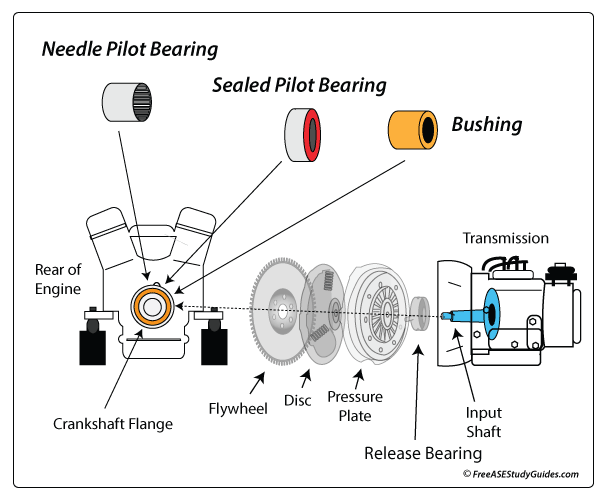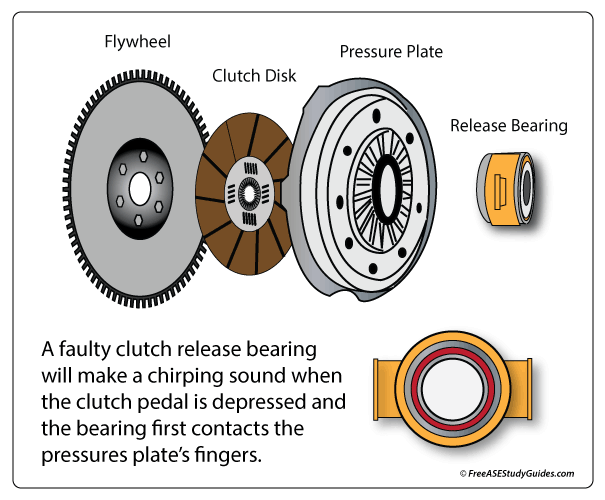Pilot Bearings

When the clutch is disengaged, the transmission's input shaft and the engine's crankshaft rotate at different speeds. The pilot bearing allows for this difference. This is why a faulty pilot bearing makes its most noise when the clutch pedal is completely depressed, and the clutch itself is completely disengaged. It's located in the center of the crankshaft flange or flywheel.
Pilot bearings are either bearings or bushings. The bearing type can be ball, roller, or needle bearings packed in grease. If the manufacturer recommends adding bearing grease, avoid contaminating the clutch disk or the surface of the flywheel. Pilot bushings are brass and infused with lubrication. Adding lubrication can increase friction with these soft metal-type bushings. Check with the vehicle manufacturer's recommendations before adding any lubrication to a pilot bearing.

A worn or damaged pilot bearing makes a whining or grinding noise. It's loud if the bearing is completely damaged. It occurs whenever the crankshaft and input shaft are rotating at different speeds. A clutch release bearing is different; it makes a chirping or squealing noise when it touches the pressure plate's diaphragm. Note that release bearings make noise with much less pedal travel.